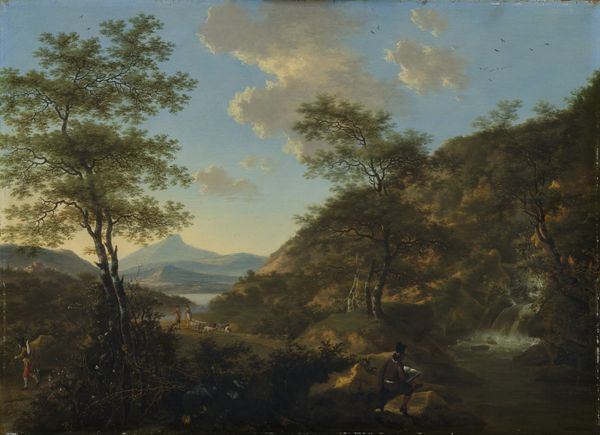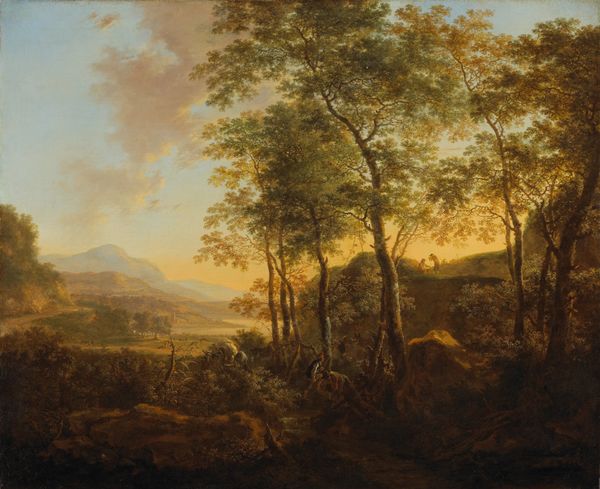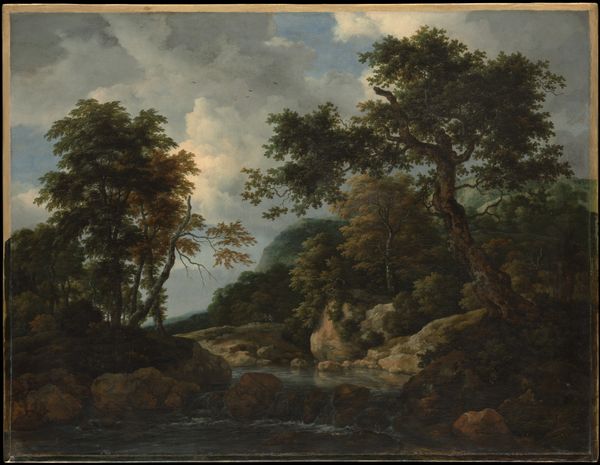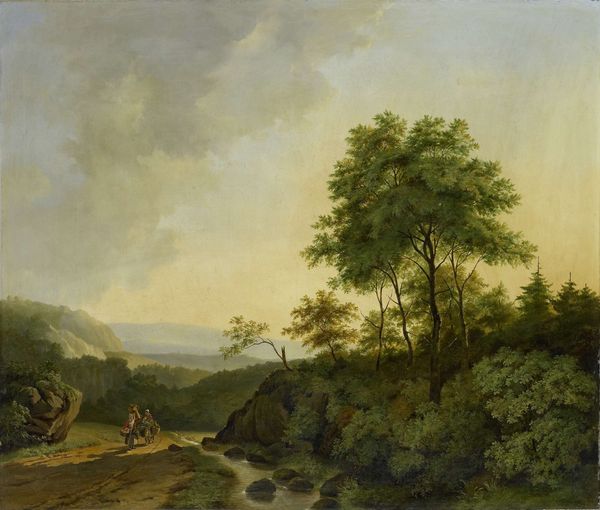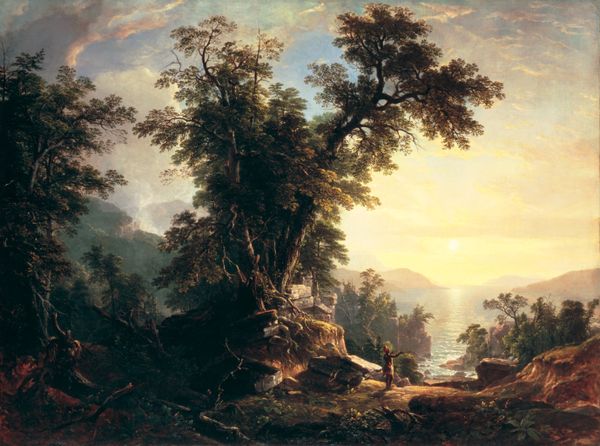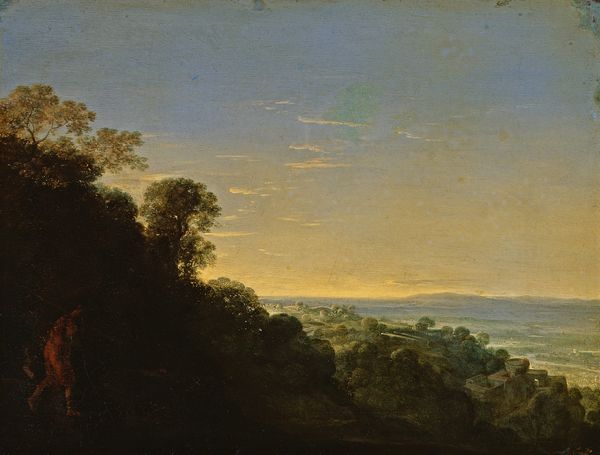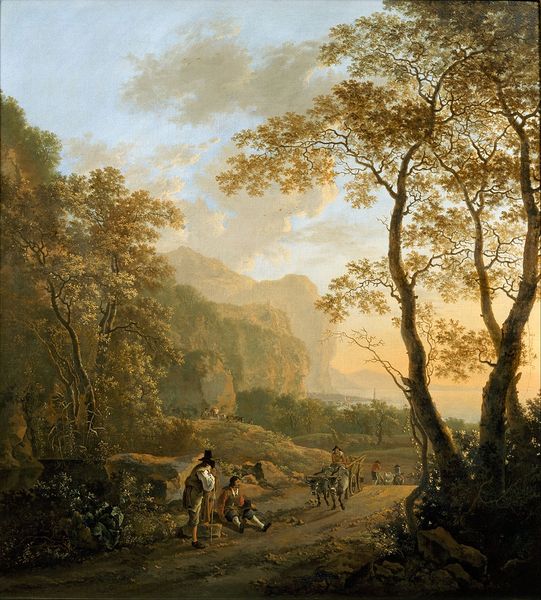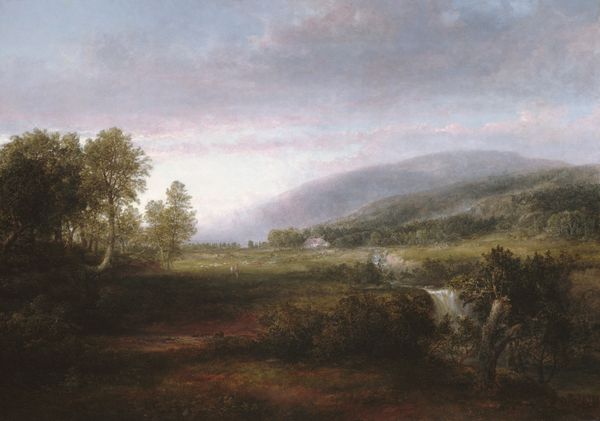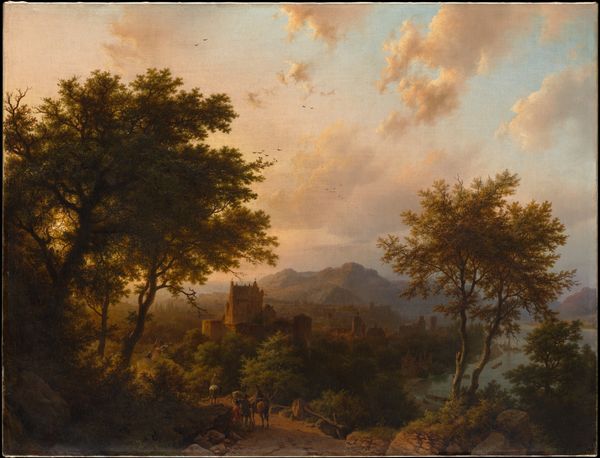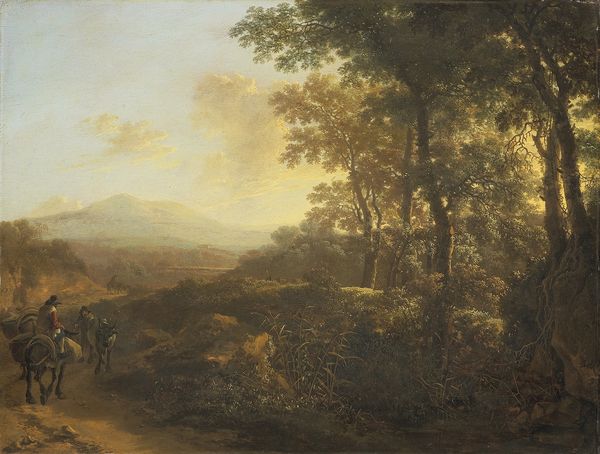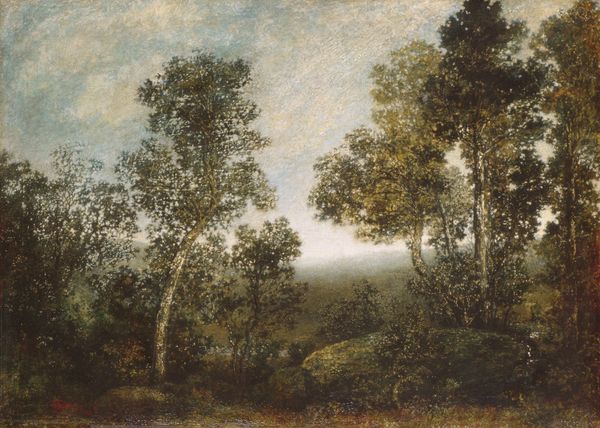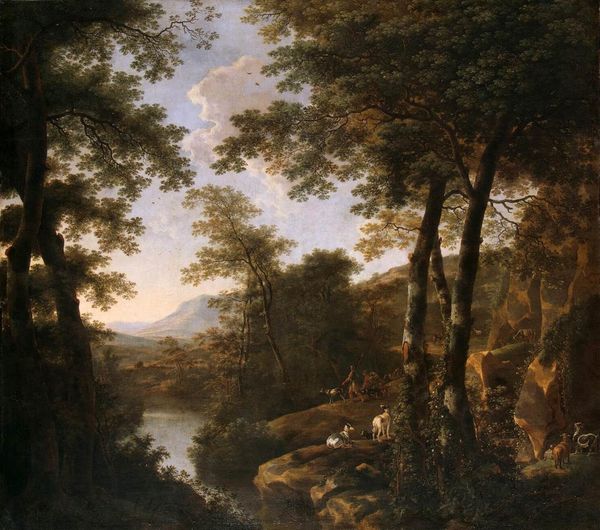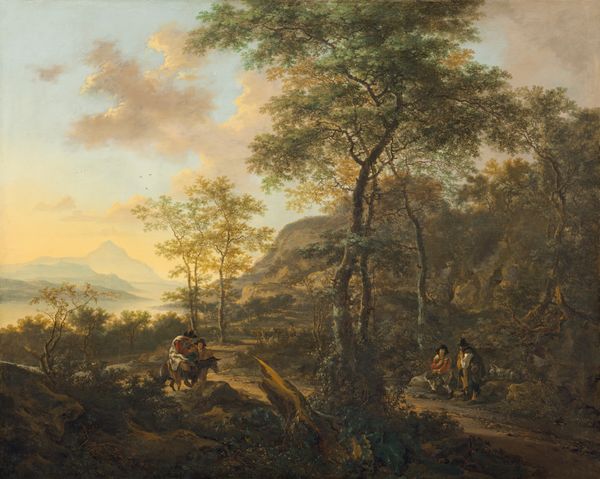
plein-air, oil-paint
#
tree
#
sky
#
countryside
#
plein-air
#
oil-paint
#
landscape
#
charcoal drawing
#
nature
#
oil painting
#
forest
#
hudson-river-school
#
nature
#
realism
Copyright: Public domain
Curator: Asher Brown Durand's "Landscape," painted in 1859, offers a sublime perspective rendered in oil. A quintessential work from the Hudson River School, wouldn’t you say? Editor: It’s…interesting. My initial reaction is how constructed this "natural" scene feels. The dark foreground acts like a proscenium, framing the supposedly wild vista. Is this about nature, or about our carefully curated view of it? Curator: Precisely! Notice the interplay of light and shadow; it gives depth, a feeling of recession into the pictorial space. The artist uses the trees on either side almost as repoussoir elements, guiding the viewer's gaze into the landscape. Editor: And who benefits from this "guided gaze?" These romanticized depictions often erased Indigenous presence, conveniently emptying the land for colonial expansion. Where are the people who actually lived in and cared for this landscape before settlers arrived? Curator: Certainly, those are valid considerations, but from a formal perspective, Durand's masterful handling of aerial perspective cannot be overlooked. Observe how the colors subtly shift and desaturate, simulating atmospheric depth. It's quite masterful! Editor: It's skillful, undoubtedly. But to me, the skill underscores the problem. The luminous glow feels…aspirational, like manifest destiny visualized. Nature as something to be conquered and admired from a distance. Where is the conversation about environmental justice and stewardship? Curator: While the painting undeniably reflects the aesthetic sensibilities of its time, focusing solely on the socio-political ramifications neglects the profound impact of its structural ingenuity, specifically his mastery in conveying spatial harmony through carefully balanced proportions. Editor: But can we genuinely separate artistic ingenuity from socio-political realities? It feels naive to praise the formal aspects without acknowledging the historical and cultural context that enabled its creation, not least the removal of communities native to this territory. Durand, perhaps unconsciously, glorifies this removal. Curator: You pose a valuable critique. However, appreciating the craftsmanship, in my view, opens the artwork to different planes of thoughtful interpretation. Editor: Perhaps it should inspire a new plane—of actionable change. This vista is beautiful, sure, but if it also blinds us to injustice, is it ethical art?
Comments
No comments
Be the first to comment and join the conversation on the ultimate creative platform.
